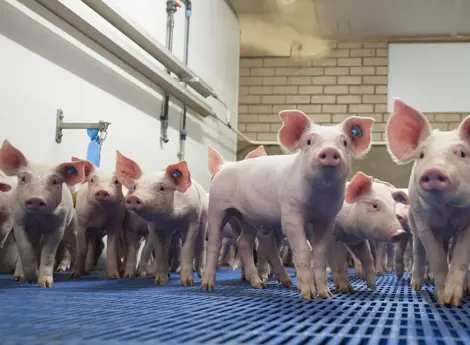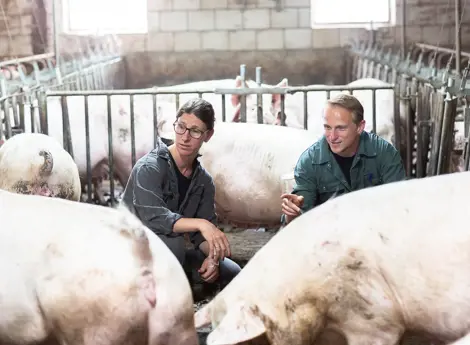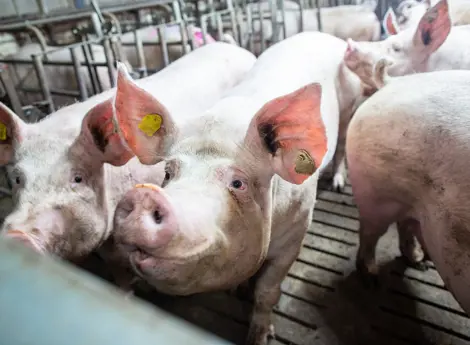Feed intake after weaning remains an excellent predictor
Feed intake after weaning remains an excellent predictor
Feed intake of piglets is important. A unique trial using individual feed intake measurements of weaned piglets offers further insights into this issue. In this trial, 100 weaned piglets were placed in 10 pens equipped with individual feeding and weighing stations. Two weight categories were included: light piglets, averaging 6.33 kg, and heavy piglets, averaging 10.20 kg. Both groups were mixed together.
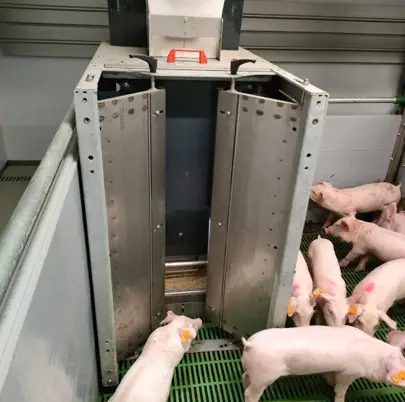
Significant effect of intake in week 1
For both categories, feed intake in the first week determined the feed intake trend for the rest of the trial period (Figure 2). In both groups, the piglets that ate the most in the first week continued to have the highest feed intake. Notably, light piglets with the highest intake initially ate as much as the heavy piglets but then experienced a drop in intake, taking a week to return to previous levels.
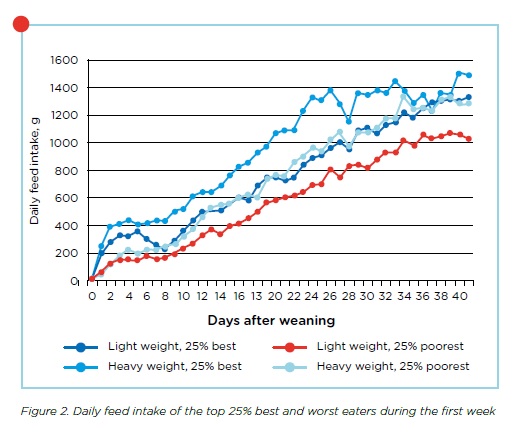
Loss of body weight during transport
The total transport time was 5 hours. The light piglets weighed 6.33 kg upon arrival and had lost 181 g. The heavy piglets weighed 10.20 kg upon arrival and had lost 265 g. Both light and heavy piglets therefore lost approximately 2.5 to 3.0% of their body weight.
Fluctuations in intake linked to diarrhoea
Throughout the trial period, feed intake and interventions (e.g. weighing) were clearly related to diarrhoea. Most cases of diarrhoea occurred between days 6 and 10. This was associated with a plateau in feed intake around day 4 (Figure 3). Different patterns in feed intake led to different timings of diarrhoea, making feed intake a good predictor of this condition. Most cases of diarrhoea occurred between days 6 and 10. This was associated with a plateau in feed intake around day 4 (Figure 3). Different patterns in feed intake led to different timings of diarrhoea, making feed intake a good predictor of this condition.
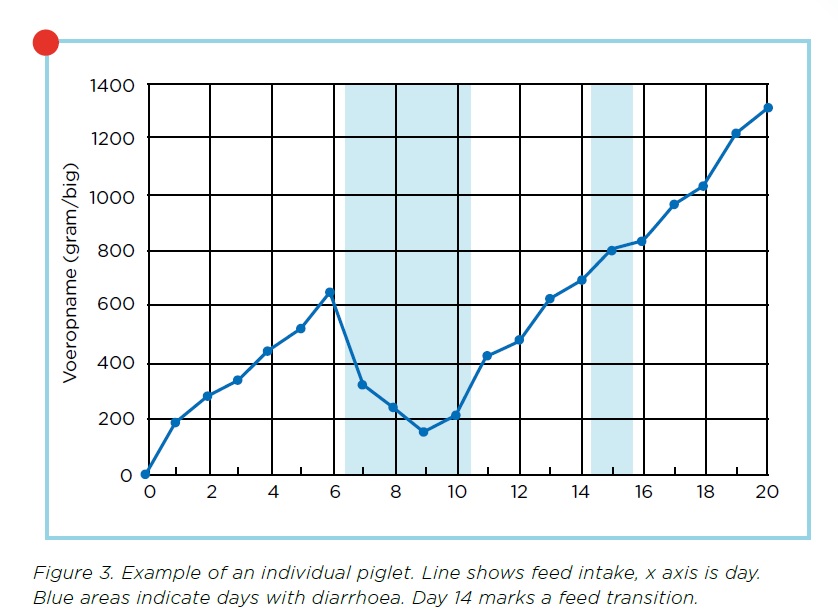
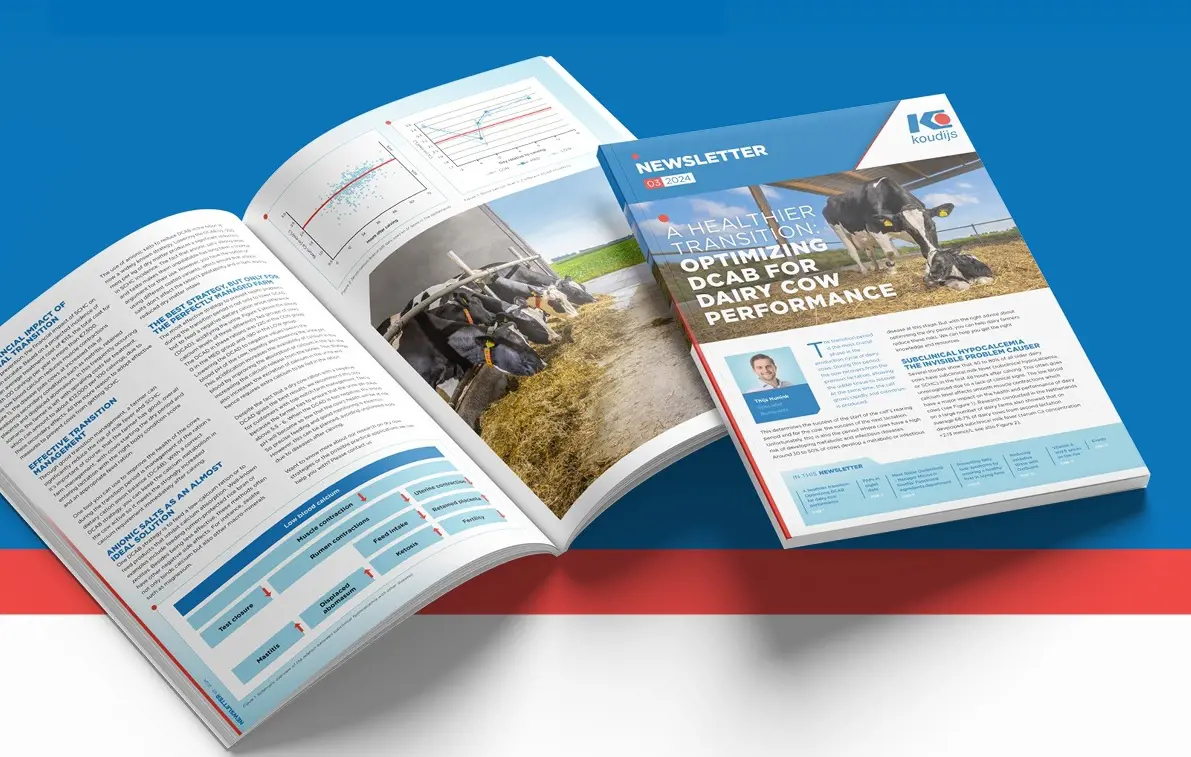
Read the latest version of the Koudijs newsletter!
Read herePiglet rhythm influences feeding time and number of feeders
Across all groups, a clear daily rhythm was observed in feeder visits. Most intake occurred in the early evening. This rhythm was the same for both light and heavy piglets. About 35% of intake occurred at night, especially among the light piglets, who ate more frequently at night. This daily rhythm shows that feeders should be refilled by late afternoon or early evening. Lighting schedules and inspection times can be adjusted to suit piglets' preference for eating in the early evening.
Light piglet feeding behaviour
Light piglets visited the feeder more often and consumed smaller portions per visit. They therefore require more feeding places, and more frequent refilling can positively impact intake.
Practical recommendations
- Create separate groups for heavy and light piglets and adjust feed and management accordingly
- Provide night lighting
- Light piglets need additional feeders for a longer period after weaning
- Consider the piglets' rhythm when planning inspection rounds and (re)feeding (high intake in the early evening)
- Follow feed intake norms and adjust feed and feed transition moments accordingly. See Table 1.
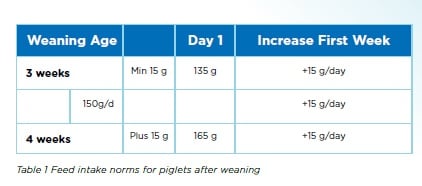
What this means for your product range
This research and the analyses provide additional insights and offer a better understanding of piglet feeding behaviour. The better the insight into intake, the better you can tailor your product range and advice to meet the needs of the market.
About the author

Bram Bronsvoort
Specialist Swine


